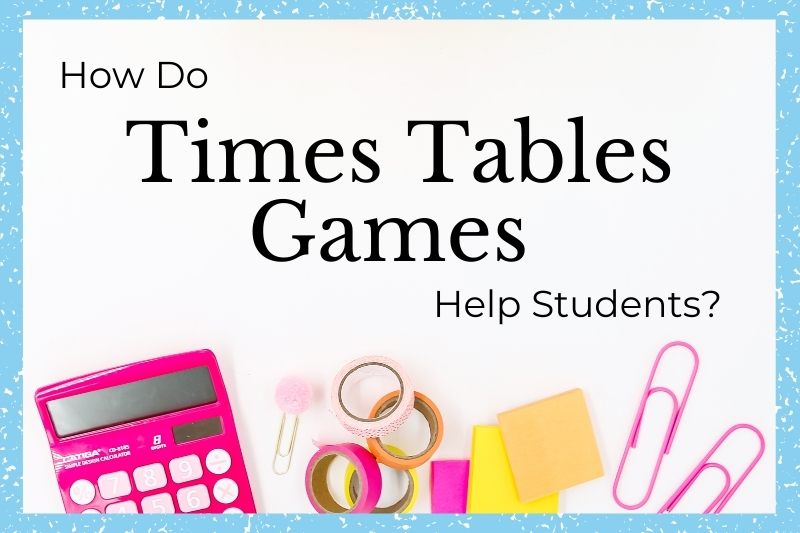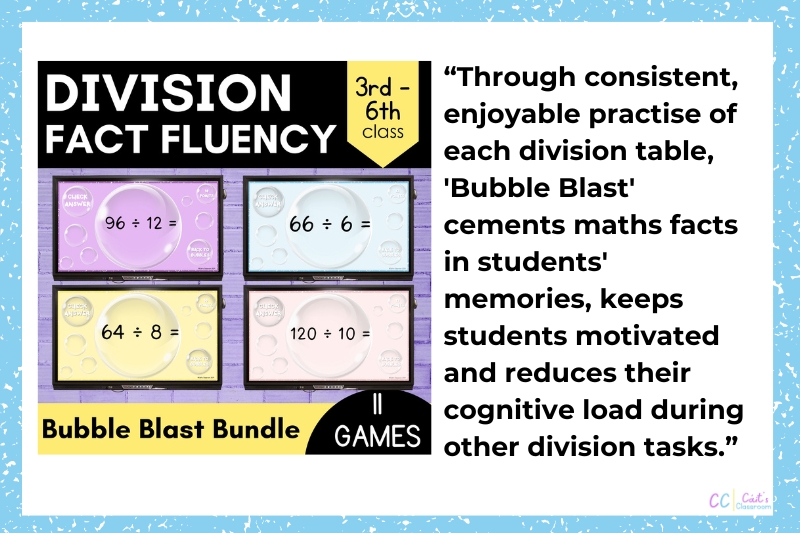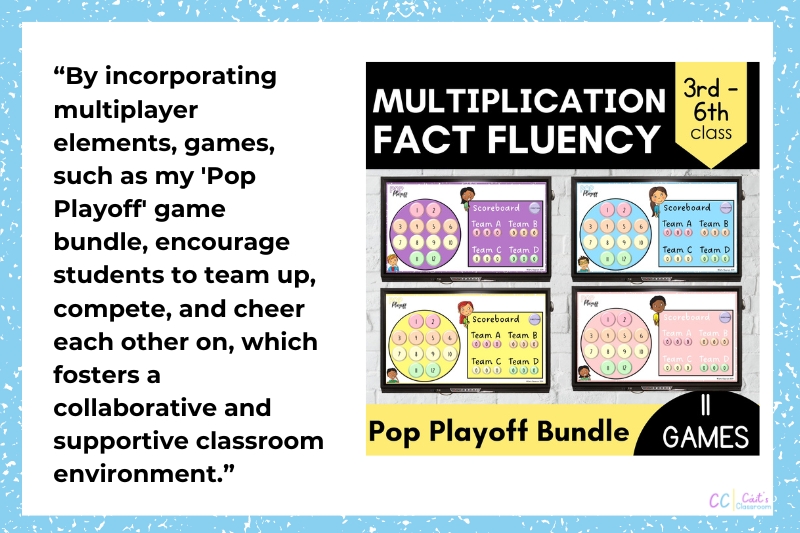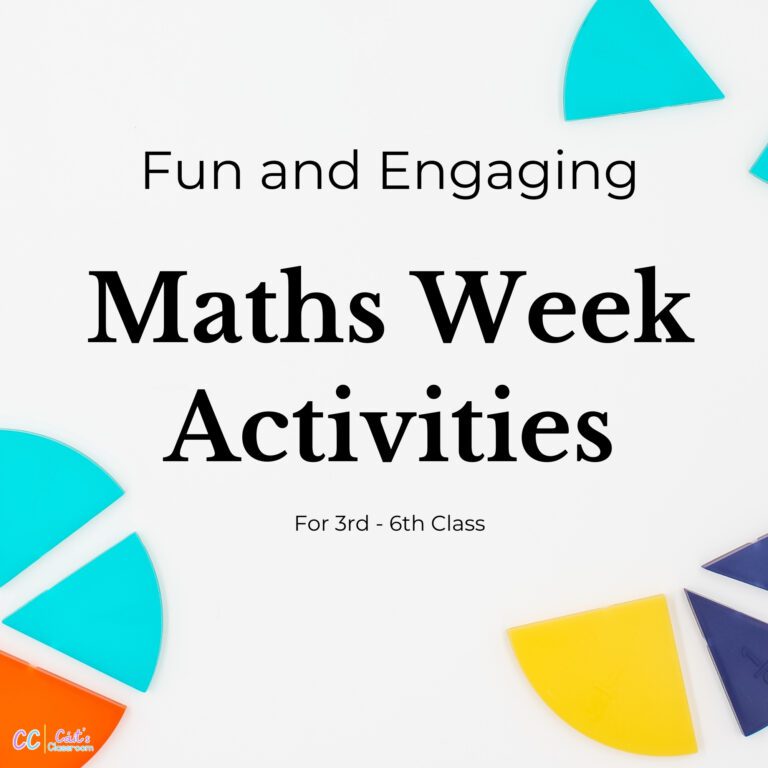When teaching maths to children aged 9-13, one of the foundational skills they must master is their times tables. Traditionally, this has meant endless rote memorisation and repetitive drills, which can lead to a lack of enthusiasm and engagement among students. But not in your classroom! Enter times tables games—a dynamic and effective solution to this common challenge. In this blog post, we’ll explore how times tables games can significantly benefit your students, making learning maths facts both enjoyable and impactful.

Why Mastering Times Tables is Essential for Maths Success
Mastering both division and multiplication tables is crucial because it helps reduce students’ cognitive load. When students know their maths facts by heart, they free up mental space to focus on more complex maths problems. This solid foundation is vital as students progress to higher-level concepts such as fractions, decimals, and algebra. With a strong grasp of their tables, they can tackle challenging concepts with greater ease and confidence, leading to a deeper understanding of maths overall.
Additionally, being proficient in division and multiplication tables aids in developing number sense, which is the ability to understand and work with numbers flexibly. It helps students recognise patterns, make connections between different areas of maths, and solve problems more efficiently. Times tables are not just about rote memorisation; they are about creating a toolkit that students can rely on throughout their mathematical journey.
By incorporating times tables games into your lessons, you can transform what used to be a dull chore into a lively and enjoyable activity. These games provide a fun, interactive way for students to practice and reinforce their multiplication and division skills. They can engage students in friendly competition, encourage collaborative learning, and keep them motivated to practise regularly. Plus, games often provide immediate feedback, helping students correct mistakes and build confidence in their abilities.
Let’s explore in more detail how these games can enhance your maths lessons and help your students become multiplication and division experts. With a variety of times tables games and activities, you can cater to different learning styles and keep the practise fresh and exciting. From interactive whiteboard games to hands-on activities and group challenges, there are countless ways to make learning times tables both effective and enjoyable.

Times Tables Games: The Power of Engagement
Times tables games turn a traditionally tedious task into a more memorable and exciting experience. When students are engaged, they are more likely to retain information and develop a positive attitude towards learning. I remember when I was first introduced to times tables games as a newly qualified teacher. The class lit up as they showed me their favorite game, ‘King/Queen of the Tables,’ where they battled head-to-head to answer tables questions correctly. The classroom buzzed with energy, and the more we played, the more their fluency with their tables grew throughout the year.
Games like ‘King/Queen of the Tables’ add a fun element that traditional methods often lack. By incorporating competitive elements, these games capture students’ attention and maintain their interest. This heightened engagement is crucial for effective learning, as it encourages students to spend more time practicing and honing their skills.
How to Play: King/Queen of the Tables
- All students who want to participate stand up in their place. Students who prefer not to play can call out questions, keep score, or join rounds led by the teacher with questions tailored to their level.
- The person calling the questions names two students who face off head-to-head to answer a tables question.
- The first student to answer correctly stays standing, and their opponent sits down. If neither student can answer the question in three tries, the caller moves on to another question.
- This process repeats until only two students remain standing.
- The last two standing students face off in a best-of-three round. The winner is crowned King or Queen of the Tables.
- Offer raffle tickets or another small prize to the two finalists.
- Mix it up by focusing on a specific times table (e.g., “multiplied by two only”) or have a free-for-all where any table goes.

Enhancing Memory with Interactive Times Tables Games
One of the standout benefits of times tables games is their ability to boost memory and recall in a way that feels engaging and enjoyable. Unlike traditional rote memorisation, which can become monotonous, interactive times tables games integrate repetition within a dynamic and stimulating context. This approach makes practising multiplication and division tables both fun and effective, turning a typically dull task into a memorable experience.
Interactive games, such as my ‘Bubble Blast’ game bundle for Microsoft PowerPoint, offer an excellent example of this. In ‘Bubble Blast,’ students burst bubbles to answer division tables questions and compete to earn points. The repeated exposure to division facts through these games helps students reinforce their understanding in a more enjoyable and impactful way. Each time a student plays against a new partner, the game provides a fresh context and new challenges, which keeps the repetition of maths facts from feeling repetitive.
This engaging form of practice aids in transferring maths facts from short-term to long-term memory, improving students’ recall speed and accuracy. Through consistent, enjoyable practise of each division table, ‘Bubble Blast’ cements maths facts in students’ memories, keeps students motivated and reduces their cognitive load during other division tasks. The stimulating nature of these games also ensures that the practice doesn’t just reinforce the facts but also makes the learning process enjoyable.
How to Play: Bubble Blast
- Divide the class into pairs or play as a whole class in two teams.
- Someone from Player 1 starts by bursting a bubble on the gameboard and answering the question displayed.
- They can solve the problem mentally or use mini whiteboards to work through it.
- Once they have an answer, they burst the “Check Answer” bubble.
- If the answer is correct, they burst the bubble to return to the gameboard.
- They award themselves points based on the value of the question they answered by pressing the buttons beside the player names.
- Continue the game by having Player 2 burst a bubble and repeat the process.
- Continue playing until all questions have been answered or for a set amount of time.
- The player or team with the most points at the end of the game wins.

Times Tables Games to Promote Collaboration
Finally collaboration through times tables games can be a game-changer in how students learn their multiplication and division facts. By incorporating multiplayer elements, games, such as my ‘Pop Playoff‘ game bundle, encourage students to team up, compete, and cheer each other on, which fosters a collaborative and supportive classroom environment.
When students work together, they can share strategies, discuss their thought processes, and support each other’s learning. This interaction not only makes the learning process more engaging but also helps students internalise their times tables more effectively. The social aspect of these ‘Pop Playoff‘ games adds a fun, communal element to learning, making it less about solitary practise and more about shared achievement in mastering maths facts.
When students see their peers actively participating, popping buttons on the interactive gameboard and celebrating successes, it creates a positive and encouraging atmosphere that can boost their own desire to master their times tables. In this way, games like ‘Pop Playoff‘ turn tables practise into a collaborative and enjoyable experience, enhancing both learning and classroom dynamics.
How to Play: Pop Playoff
- Divide the class into small groups of four students or play as a whole class into teams of four.
- Someone from Team 1 starts by popping a button on the gameboard and answering the question displayed.
- They can solve the problem mentally or use mini whiteboards to work through it.
- Once they have an answer, they click the “Check Answer” button.
- If the answer is correct, they click the button to return to the gameboard.
- They award points to their team based on the value of the question they answered by popping the buttons underneath the team names.
- If a button is popped too many times, don’t worry—the numbers reset to 0 after 9.
- Continue the game by having a player from the next team pop a button and repeat the process.
- Continue playing until all questions have been answered or for a set amount of time.
- The team with the most points at the end of the game wins.

Incorporating times tables games into your maths teaching can have a profound impact on students’ learning experiences. By transforming tables practise into a fun, interactive, and enjoyable activity, these games help to increase engagement, improve memory and recall and promote collaboration. If you’re looking for an effective way to boost your students’ multiplication and division skills while keeping them motivated and excited about learning, times tables games are the way to go. Give them a try and watch your students’ confidence and proficiency in their maths facts soar!




